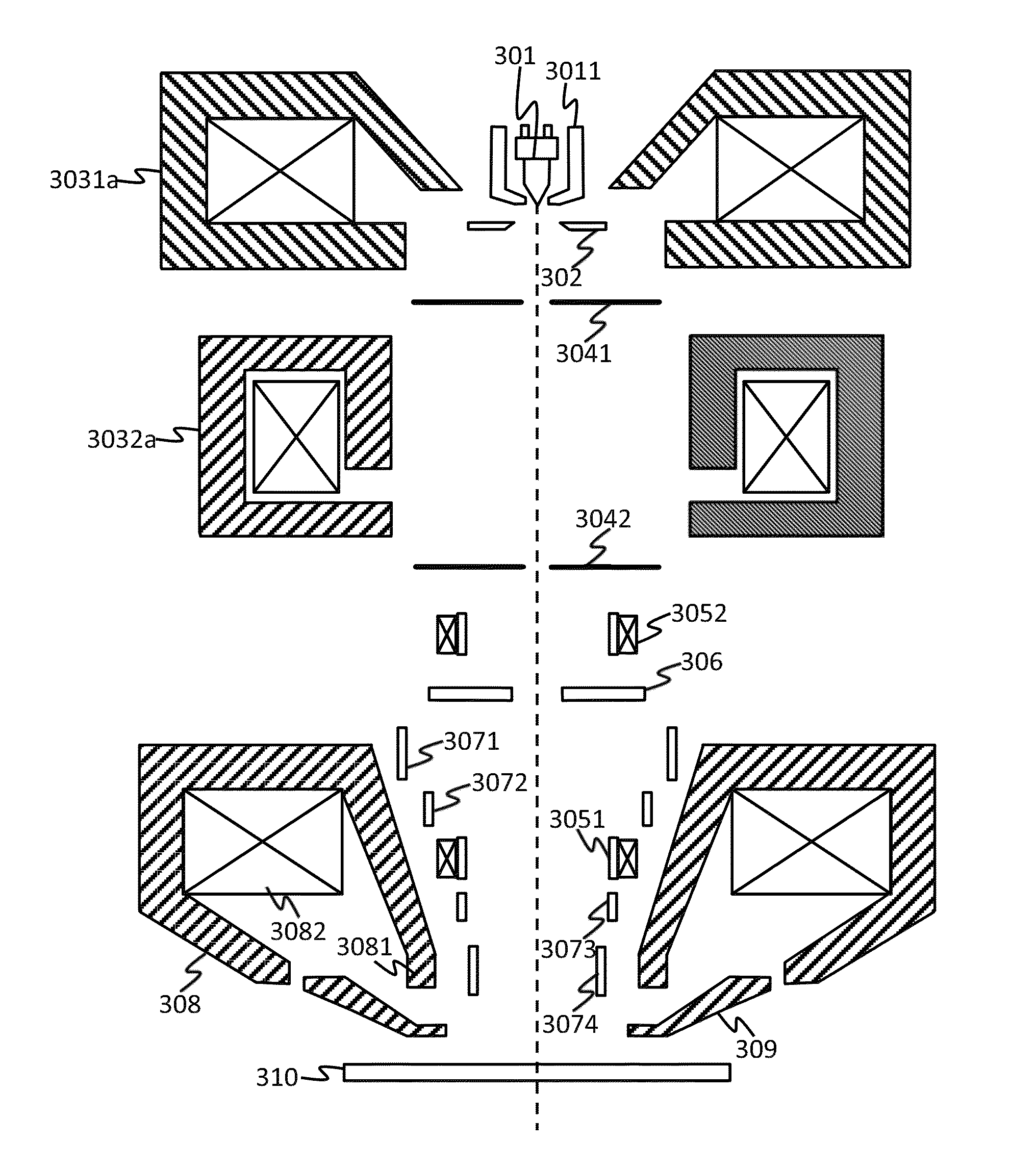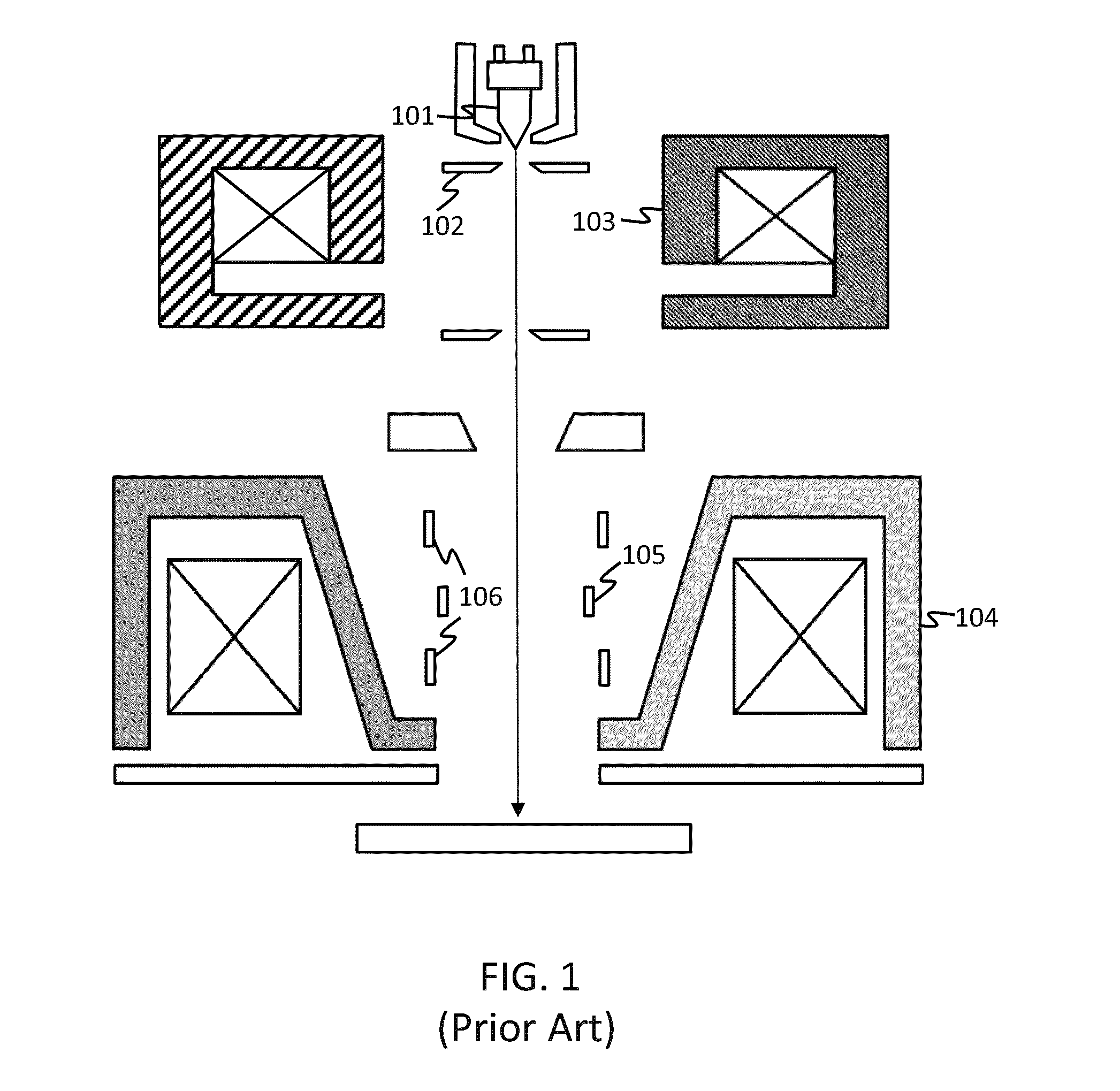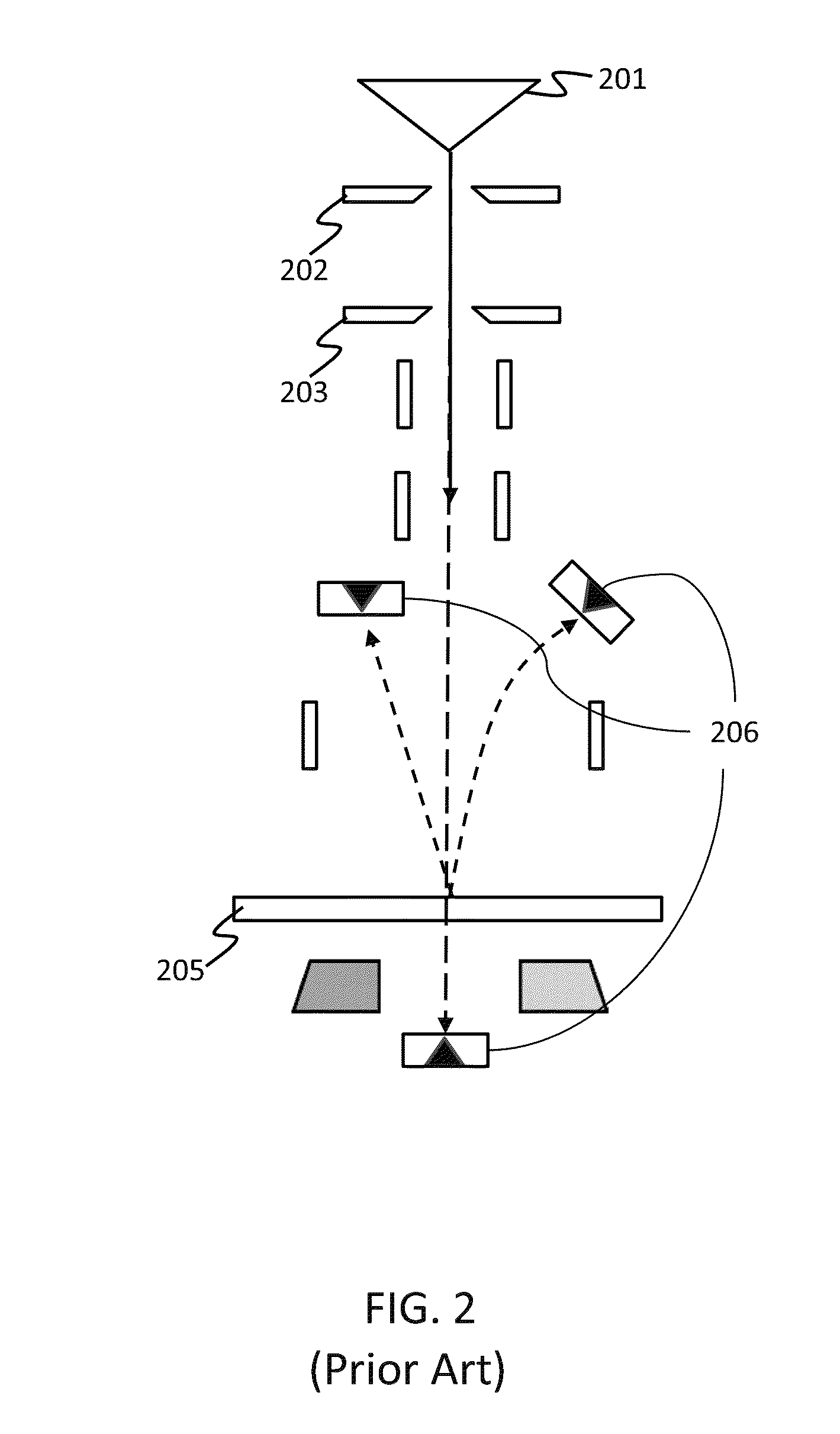Method and compound system for inspecting and reviewing defects
a technology of inspection and inspection apparatus, applied in the direction of electrical equipment, electric discharge tubes, basic electric elements, etc., can solve the problems of inability to observe the optical inspection tool, the dimension of the defect is smaller than the optical wavelength, and the conventional optical inspection tool is thrown into a dilemma, so as to achieve cost saving and small scanning
- Summary
- Abstract
- Description
- Claims
- Application Information
AI Technical Summary
Benefits of technology
Problems solved by technology
Method used
Image
Examples
first embodiment
[0034]In one embodiment in FIG. 3(a), the immersion magnetic lens 3031a and the condenser lens 3032a are altered to a double lens with a magnetic immersion condenser lens 3031d and a magnetic non-immersion condenser lens 3032d following the lens 3031d as shown in FIG. 3(d). While operating in the inspection mode, the magnetic immersion condenser lens 3031d is turned on and on the contrast, the magnetic immersion condenser lens 3031d is turned off and the non-magnetic immersion condenser lens 3032d has to be turned on for the review mode of operation. And the two deflection systems 3071 to 3074 and two Wien filters 3051 and 3052 have the same operation with the embodiment shown in FIG. 3(a). Herein, one aperture can be arranged below the double lens for the preferred beam current.
[0035]In another embodiments according to the embodiments in FIGS. 3(a) and (d), a booster (not shown) can be added to each of them, which stretches from the cathode to the SORIL, to accelerate the beam cur...
second embodiment
[0039]In one embodiment in FIG. 5(a), the immersion magnetic lens 503a and the condenser lens 504a are altered to a double lens 503b and 504b as shown in FIG. 5(b). The two working modes of inspection and review have the same operation with the embodiment shown in FIG. 3(d).
[0040]In another embodiments according to the second embodiment in FIGS. 5(a) and (b), a booster (not shown) can be added to each of them, which stretches from the cathode to the stage, to accelerate the beam current. The second Wien filter can be handled as that of the first embodiment.
PUM
 Login to View More
Login to View More Abstract
Description
Claims
Application Information
 Login to View More
Login to View More - R&D
- Intellectual Property
- Life Sciences
- Materials
- Tech Scout
- Unparalleled Data Quality
- Higher Quality Content
- 60% Fewer Hallucinations
Browse by: Latest US Patents, China's latest patents, Technical Efficacy Thesaurus, Application Domain, Technology Topic, Popular Technical Reports.
© 2025 PatSnap. All rights reserved.Legal|Privacy policy|Modern Slavery Act Transparency Statement|Sitemap|About US| Contact US: help@patsnap.com



